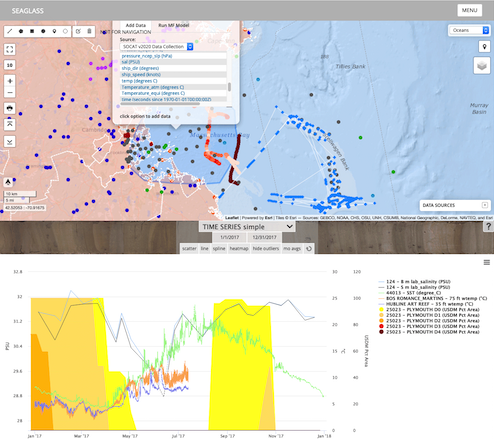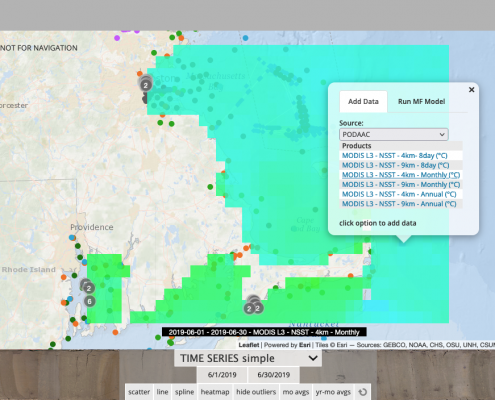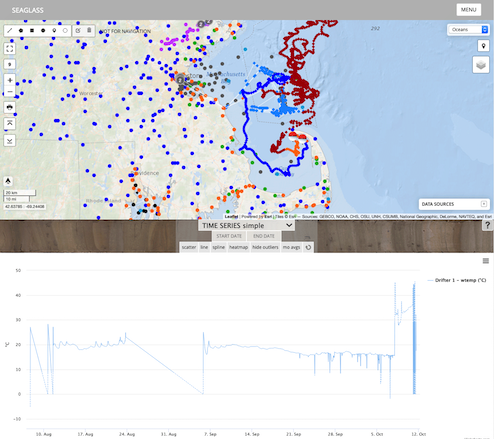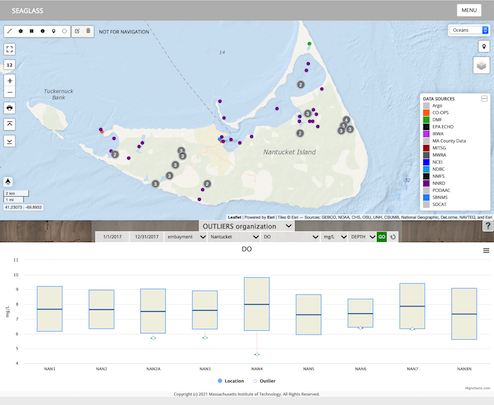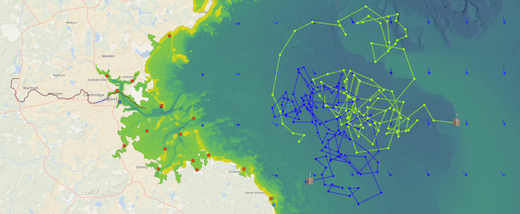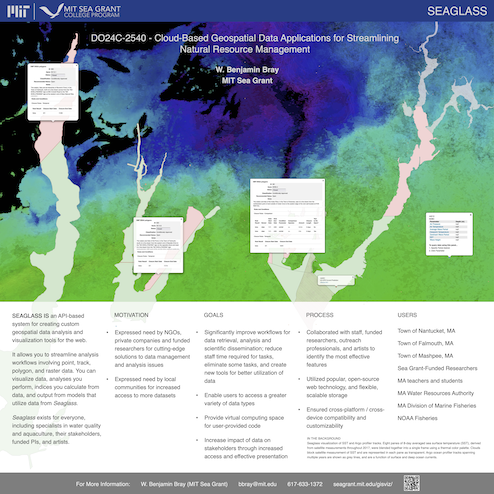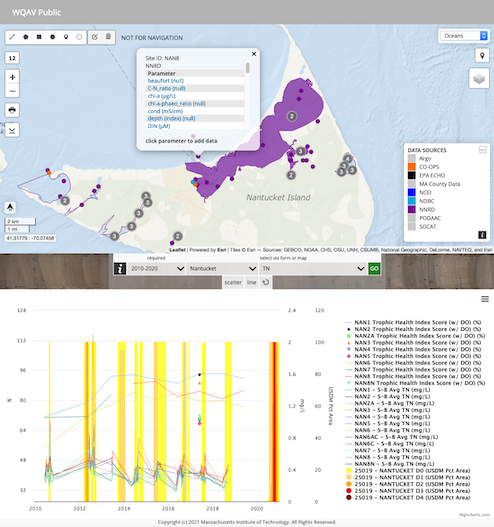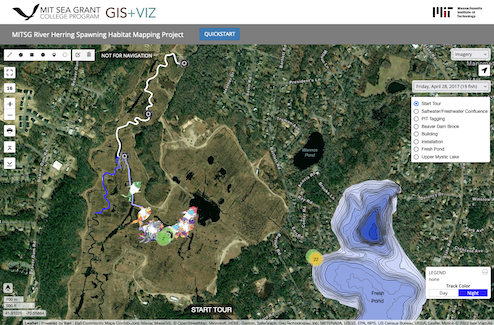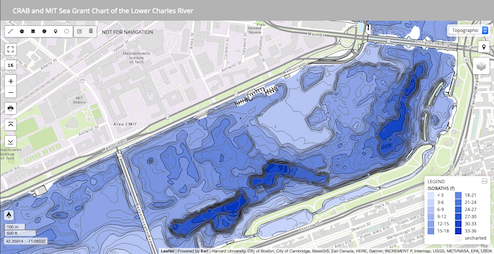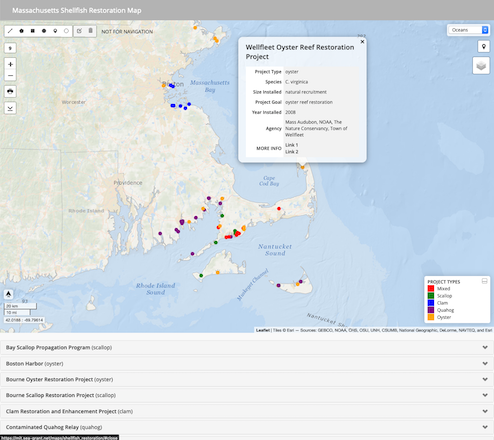MIT Sea Grant provides GEOSPATIAL DATA services and guidance to scientists, engineers, outreach specialists and educators.
- GEOGRAPHICAL INFORMATION SYSTEMS (GIS)
- DATA VISUALIZATION
- DATABASE DESIGN
- WEB-BASED GEOSPATIAL APPS
- REMOTE DATA ACCESS
MITSG GIS+VIZ helps stakeholders work with geospatial data using the most modern methods, and take advantage of recent improvements in data storage, data service and API accessibility, web technology, and user interface design. Our methods support the democratization of data in the public realm, as well as innovation in how scientists access and use data.








